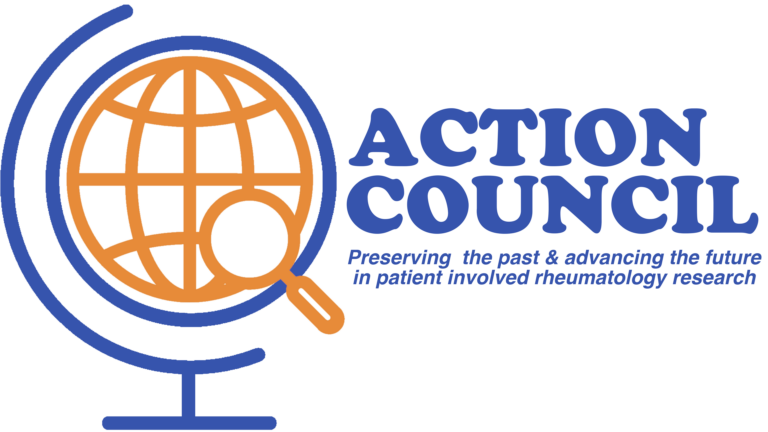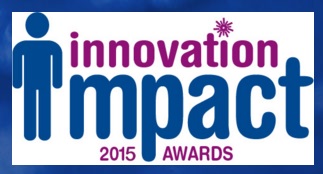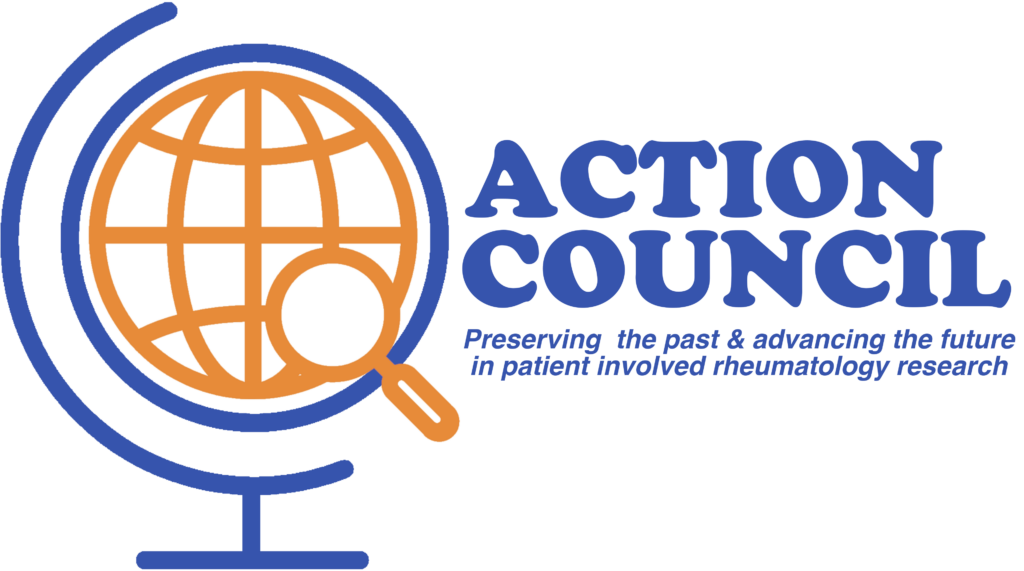Health Services Researchers Pathway
Health Services Researchers

Patient Engagement – And We’re Off!
While patient engagement in other disease groups started a decade prior, patient involvement in rheumatology research started in the late 1990’s in Canada and around 2000 in Europe. Partly due to regulatory barriers between patients and pharmaceutical companies at that time, early patient involvement focused strongly on non-pharmacologic research (government, patient organizations, research institutes).
- 1993: Cochrane Musculoskeletal (CM) CM is an international, non-profit organization that aims to help people make well-informed decisions about health care by preparing, maintaining, and promoting reviews on the effects of health care treatments. They produce reliable, up-to-date reviews of interventions for the prevention, treatment, or rehabilitation of musculoskeletal disorders in the form of systematic reviews. CM is also dedicated to making their systematic reviews available to those interested in treatments for musculoskeletal diseases musculoskeletal.cochrane.org formed a Consumer Group (CMSG), enlisting patient systematic reviewers to join health care professionals and researchers belonging to Cochrane. Canada
- As of today, of all registered review groups that make up Cochrane, the CMSG is one of the largest with over 700 active health care professionals, researchers, and consumer representatives from 26 countries.
CoPI: Consumer reviewer
Context of Research: Systematic literature reviews, dissemination (knowledge translation)
Patient research collaboration in rheumatology begins in Canada
- 1998: First self-governed Consumer Advisory Council (CAC)The mission of the Consumer Advisory Council (CAC) is to advocate for consumers and provide for strong public and consumer input in healthcare reform policies in Connecticut. The purpose of the Consumer Advisory Council is to ensure significant consumer participation in the planning and implementation process. portal.ct.gov/OHS/Pages/Consumer-Advisory-Council was established as part of Canadian Arthritis Network/CAN The Canadian Arthritis Network (CAN) is a not-for-profit organization that supports integrated, trans-disciplinary research and development. can.arthritisalliance.ca, the first federally funded arthritis research institute in Canada. After morphing into the Alliance for the Canadian Arthritis Program (ACAP) in 2012, then Alliance for Arthritis in in Canada (ACC), the group was disbanded in 2019.
- 2000: Arthritis Research Canada (ARC) ARC was created in 2000 in recognition of the tremendous potential that research can bring to arthritis treatment in Canada, and indeed, the world. Arthritis Research Canada has earned international attention as a leading arthritis research environment. We have built a strong multi-disciplinary research team of outstanding medical doctors and research scientists, and we willingly collaborate with medical professionals around the world. www.arthritisresearch.ca and established the Arthritis Patient Advisory Board (APAB).The Arthritis Patient Advisory Board (APAB) is comprised of volunteer advocates with arthritis who bring personal experience and arthritis knowledge to research decision making at Arthritis Research Canada. Their goal is to ensure the patient perspective is represented on research matters related to prevention, treatment and self-management of arthritis. Individually and collectively, they communicate research information and findings to arthritis patients, professional organizations and the general public. www.arthritisresearch.ca
- Additionally, Patient Organization, Arthritis Consumer Experts/JointHealthⓇArthritis Consumer Experts/JointHealthⓇ, a national organization that provides free, science-based information and education programs in both official languages to people with arthritis. https://jointhealth.org/ , was established.
CoPI: Advisory panels
Context: Research & Development
Databanks and Registries
Databanks and registries in the rheumatology community began actively collecting relevant data from patients that can be used in both non-pharmaceutical and drug development research efforts. However, most registries – while rheumatology in nature – typically only include patients as respondents.
CoPI: Co-production of stakeholder groups
Context: Registries
Young people and families are included in research
- 2002: The Childhood Arthritis and Rheumatology Research Alliance (CARRA) Founded by a small group of pediatric rheumatologists who aimed to create an investigator-led collaborative research network by establishing a registry. The information is provided by the medical team and by patients and their families. The registry was created to monitor the long-term safety of the medications used to treat pediatric rheumatic diseases. https://carragroup.org pediatric registry is established. The founding members quickly realized that one of the best ways to achieve its primary focus was to begin a registry project. The CARRA Registry was later founded as a means to collect information about how childhood-onset rheumatic diseases are treated and how they affect patients by collecting information from the medical team, patients, and their families. United States
- 2006: The National Institute for Health Research (NIHR) (NIHR) was established in 2006 under the government’s health research strategy Best Research for Best Health to “create a health research system in which the NHS supports outstanding individuals, working in world-class facilities, conducting leading-edge research focused on the needs of patients and the public”. Since that time, we have transformed research in and for the NHS and helped to shape the health research landscape more broadly. Our mission is unchanged: to improve the health and wealth of the nation through research. We deliver against this mission through five core workstreams. www.nihr.ac.uk establishes the ‘Patient Research Ambassadors’ network and supporting GenerationRGenerationR is a National Network (GenerationR Alliance) of Young People’s Advisory Group’s (YPAGs) based across the United Kingdom to support the design and delivery of paediatric research. GenerationR Alliance YPAGs are a resource available to any health researcher (both academic and life science industries) who seek the input of children, young people, and families in their research projects www.invo.org.uk , a series of young people’s advisory groups across the country enabling children and young people under 25 to be involved in research. United Kingdom
CoPI: Advisory panels
Context: Research & Development, dissemination (knowledge translation), children, registries, young adults
Rheumatology guidance begins
- 2005: Cochrane Musculoskeletal (CM)Cochrane Musculoskeletal (CM) is made up of health care professionals, researchers and consumer representatives that belong to Cochrane, an international, non-profit organization that aims to help people make well-informed decisions about health care by preparing, maintaining and promoting reviews on the effects of health care treatments. They produce reliable, up-to-date reviews of interventions for the prevention, treatment or rehabilitation of musculoskeletal disorders in the form of systematic reviews. CM is also dedicated to making our systematic reviews available to those interested in treatments for musculoskeletal diseases (dissemination). In 1993, they formed a Consumer Group (CMSG), enlisting patient systematic reviewers to join health care professionals and researchers belonging to Cochrane. Canada musculoskeletal.cochrane.org develops guidance for systemic review authors and for building partnerships in research.Consumer‐driven health care: Building partnerships in research, 2005. Shea B, Santesso N, Qualman A, Heiberg T, Leong A, Judd M, et al. Consumer-driven health care: building partnerships in research. Health Expectations 2005;8(4):352-9.
musculoskeletal.cochrane.org
Download PDF
- 2006: Cochrane Musculoskeletal Consumer Group (CMSG)The CMSG formed in 1993, enlisting patient systematic reviewers to join health care professionals and researchers belonging to Cochrane. “The feedback provides a layperson’s perspective to complement the feedback provided by our clinical experts.”musculoskeletal.cochrane.org develops initial recommendations to aid knowledge translation and exchange between clinicians and consumersSantesso N, Maxwell L, Tugwell PS, Wells GA, O’connor AM, Judd M, Buchbinder R. Knowledge transfer to clinicians and consumers by the Cochrane Musculoskeletal Group. J Rheumatol. 2006 Nov;33(11):2312-8. PMID: 17086612.. These were updated in 2014.
- 2008: Assessment of SpondyloArthritis International SocietyAssessment of SpondyloArthritis International Society is an international group of experts in the field of spondyloarthritis.
asas-group.org/European Alliance of Associations for Rheumatology European League Against Rheumatism (EULAR) aims to reduce the burden of rheumatic diseases on the individual and society and to improve the treatment, prevention, and rehabilitation of musculoskeletal diseases.
eular.org (ASAS/EULAR) collaborated with patients to translate recommendations for the management of ankylosing spondylitis for the first time into a language easily understood by patients.
CoPI: Advisory panels, consumer reviewers
Tools: Guidance documents – patient-researcher engagement; Recommendations – dissemination
Context: Systemic literature reviews, lay summaries, guideline development, dissemination (knowledge translation)
Experience working with patients in research leads to guidance for best practices
As a few years have passed since patient engagement in rheumatology began, guidance and recommendations are developed based on lessons learned.
- 2010: Patient Research Partner (PRP): As a result of patient-researcher collaboration with Outcome Measures in Rheumatology (OMERACT) OMERACT is a global community for the development of Core Outcome Sets in the field of rheumatology. Patients participate as research partners in all phases of the research and are equal members in any OMERACT working group.
omeract.org; omeractprpnetwork.orgin 2002, Eueropean Alliance of Associations for Rheumatology European Alliance of Associations for Rheumatology (EULAR) European Alliance of Associations for Rheumatology (EULAR) is the organization which represents the people with arthritis/rheumatism, health professionals (HPR), and scientific societies of rheumatology of all the European nations. The aims of EULAR are to reduce the burden of rheumatic diseases on the individual and society and to improve the treatment, prevention, and rehabilitation of musculoskeletal diseases. To this end, EULAR fosters excellence in education and research in the field of rheumatology. It promotes the translation of research advances into daily care and fights for the recognition of the needs of people with musculoskeletal diseases by the governing bodies in Europe.
eular.org publishes recommendations for patient-researcher collaboration and defines the role of Patient Research Partner (PRP)Patient Research Partner (PRP) is defined as a person with a relevant disease who participates or has participated as an active research team member on an equal basis with professional researchers, thus adding the value of experiential knowledge to a research project.
and defines the role of Patient Research Partner (PRP)Patient Research Partner (PRP) is defined as a person with a relevant disease who participates or has participated as an active research team member on an equal basis with professional researchers, thus adding the value of experiential knowledge to a research project.
De Wit M, et al. European League Against Rheumatism recommendations for the inclusion of patient representatives in scientific projects. Annals of the rheumatic diseases 2011;70(5):722-6.
eular.org Europe - 2010: The University of the West of England (UWE)The University of the West of England (UWE) rheumatology group is involved in projects of regional, national, and global significance.www.uwe.ac.uk rheumatology group publishes a dedicated paper Patient collaboration in the design of Patient-Reported Outcome Measures: Capturing the Experience of Fatigue in Rheumatoid Arthritis
Nicklin J, et al. Collaboration with patients in the design of patient-reported outcome measures: Capturing the experience of fatigue in rheumatoid arthritis. Arthritis Care & Research 2010;62(11):1552-8. on patient-researcher collaboration in the development of a new patient-reported outcome (PRO) for fatigue in rheumatoid arthritis (BRAF). United Kingdom. Measures were updated in 2017.Bristol rheumatoid arthritis fatigue scales (BRAFS) are free to use for clinical or academic reasons.
www1.uwe.ac.uk/ - 2011: European Alliance of Associations for Rheumatology (EULAR) EULAR is the organization that represents the people with arthritis/rheumatism, health professionals (HPR), and scientific societies of rheumatology of all the European nations. The aims of EULAR are to reduce the burden of rheumatic diseases on the individual and society and to improve the treatment, prevention, and rehabilitation of musculoskeletal diseases. To this end, EULAR fosters excellence in education and research in the field of rheumatology. It promotes the translation of research advances into daily care and fights for the recognition of the needs of people with musculoskeletal diseases by the governing bodies in Europe.
www.eular.org establishes the network of Patient Research Partners and develops patient engagement Reference Cards and Background document . Europe
. Europe - 2012: INVOLVEINVOLVE, Establishment 1996 and funded by the National Institute for Health Research (NIHR) to support active public involvement in National Health Services (NHS) public health and social care research. As a national advisory group, the role of INVOLVE is to bring together expertise, insight, and experience in the field of public involvement in research (PIR), with the aim of advancing it as an essential part of the process by which research is identified, prioritized, designed, conducted and disseminated.
www.invo.org.uk publishes updated briefing notes for researchers . INVOLVE notes some of the content is drawn from earlier editions is substantially different in its content, reflecting the changing environment since the original briefing notes were written in 2004. United Kingdom
. INVOLVE notes some of the content is drawn from earlier editions is substantially different in its content, reflecting the changing environment since the original briefing notes were written in 2004. United Kingdom
CoPI: Patient Research Partners (PRPs), Public Involvement in Research (PIR)/Patient and Public Involvement in Research (PPI)
Tools: Recommendations – patient-researcher engagement; Reports – patient researcher engagement; Guidance documents – patient researcher engagement and briefing notes
Context: Guideline development, Patient-reported outcomes (PROs)
As the value of patient engagement evolves, so does guidance and outcome focus
As the decade progresses, international efforts to expand the patient voice in rheumatology research continues. As a result, more programs that focus on patient-reported needs, guidance for involving patients in research, and reports that assess patient involvement emerge.
- 2013: Patient-Centered Outcomes Research Institute (PCORI)PCORI is an independent nonprofit, nongovernmental organization and was authorized by Congress in 2010. PCORI is the largest funder of comparative effectiveness research (CER) in the United States with the mandate to improve the quality and relevance of evidence available to help patients, caregivers, clinicians, employers, insurers, and policymakers make better-informed health decisions. In addition to requiring patient and stakeholder engagement in PCORI funded research, PCORI also engages the public through its own institutional activities, such as Merit Review, which includes patients and stakeholders as reviewers of research applications, ensuring dollars spent are aligned with research outcomes that are meaningful to the patient population. www.pcori.org began the novel funding opportunity, Eugene Washington Engagement Awards ProgramThe Eugene Washington PCORI Engagement Award program, named in honor of the first chair of PCORI’s Board of Governors, is intended to bring more patients, caregivers, clinicians, and other healthcare stakeholders into the research process. The goal is to support projects that will build a community better able to participate in patient-centered outcomes research (PCOR) and comparative clinical effectiveness research (CER) and serve as channels to disseminate study results. www.pcori.org/engagement , which supports projects that will build a community better able to participate in patient-centered outcomes research (PCOR) and comparative clinical effectiveness research (CER) and serve as channels to disseminate study results. Example of award: Matching Actions to Needs: What Matters Most to the Arthritis Community?
 – Arthritis Foundation, United States
– Arthritis Foundation, United States - 2014: Canada’s Strategy for Patient-Oriented Research (SPOR)Endorses the active partnership of patients, researchers, health professionals and decision-makers in research so as to build a sustainable and accessible health care system that optimizes the health of Canadian citizens. cihr-irsc.gc.ca publishes A Resource Guide for Research Teams and Networks
 , a living guide to support researchers, decision-makers and other relevant stakeholders involved in a wide range of SPOR-related activitiesThis resource aims to:
, a living guide to support researchers, decision-makers and other relevant stakeholders involved in a wide range of SPOR-related activitiesThis resource aims to:
1) Clarify key concepts and terms relevant to involving patients in health research such as what we mean by patients, the public and stakeholders, and the different levels and types of involvement, and the rationales and perceived benefits of patient involvement
2) Describe, at a very high level, the current state of the evidence about patient engagement with respect to the effectiveness of different methods in relation
to process and outcome measures
3) Assemble in one place, a selection of resource documents collected from leading patient engagement organizations around the world to provide basic guidance for researchers about principles and methods for involving patients
in health research. - 2014: Group for Research and Assessment of Psoriasis and Psoriatic Arthritis (GRAPPA)Group for Research and Assessment of Psoriasis and Psoriatic Arthritis (GRAPPA) is organized exclusively for non-profit, educational, and scientific purposes, specifically to facilitate the sharing of information related to psoriasis and psoriatic arthritis, networking among different medical disciplines that see psoriasis and psoriatic arthritis patients, and to enhance research, diagnosis, and treatment of psoriasis and psoriatic arthritis.
www.grappanetwork.org publishes Patient Participation in Psoriasis and Psoriatic Arthritis Outcome Research report , co-authored by Patient Research Partners (PRPs)Patient Research Partner (PRP) is defined as a person with a relevant disease who participates or has participated as an active research team member on an equal basis with professional researchers, thus adding the value of experiential knowledge to a research project. After this publication, GRAPPA publishes annual patient reports through 2018.
, co-authored by Patient Research Partners (PRPs)Patient Research Partner (PRP) is defined as a person with a relevant disease who participates or has participated as an active research team member on an equal basis with professional researchers, thus adding the value of experiential knowledge to a research project. After this publication, GRAPPA publishes annual patient reports through 2018. - 2014: Cochrane Musculoskeletal Consumer Group (CMSG)Formed in 1993, enlisting patient systematic reviewers to join health care professionals and researchers belonging to Cochrane. “The feedback provides a layperson’s perspective to complement the feedback provided by our clinical experts.” musculoskeletal.cochrane.org updates recommendations to aid knowledge translation and exchange between clinicians and consumers
 .
.
CoPI: Patient Research Partners (PRPs), Patient-Oriented Research (POR), Patient-Centered Outcomes Research (PCOR)
Tools: Guidance – patient-researcher engagement; Reports – patient researcher engagement, patient engagement, and dissemination; Instruments – patient engagement
Context: Patient-reported outcomes (PROs), Clinical Effectiveness Research (CER)/decision science, dissemination/knowledge translation
Focus on expanding PCOR leads to the established of collaborative communities – United States
- 2013: PCORnet PCORnet is a national resource that offers the kind of research ecosystem that has long been pursued: a fully integrated network where vast, highly representative health data, research expertise, and patient insights are built-in and accessible from the very start. The infrastructure of PCORnet is well established, meaning that the community knows how to maximize the value of these connections to deliver fast, trustworthy answers that advance public health. pcornet.org – The era of big data, loosely defined as the development and analysis of large or complex data sets, the Patient-Centered Outcomes Research Institute (PCORI) The Patient-Centered Outcomes Research Institute (PCORI) is an independent nonprofit, nongovernmental organization and was authorized by Congress in 2010. PCORI is the largest funder of comparative effectiveness research (CER) in the United States with the mandate to improve the quality and relevance of evidence available to help patients, caregivers, clinicians, employers, insurers, and policymakers make better-informed health decisions.
www.pcori.org establishes PCORnet, bringing new opportunities to empower patients and their families to generate, collect, and use their health information for both clinical and research purposes. Through PCORnet, a “network of networks” was established– Patient-Powered Research Networks (PPRNs), built and governed by stakeholder groups focused on specific conditions and community interests. Learn more about PPRN’s .
.
Two rheumatology specific PPRN’s were developed, including:
- 2015: ArthritisPowerVisit the ArthritisPower.org website for products and/or info about how to get involved. led by CreakyJointsCreakyJoints is a digital community for millions of arthritis patients and caregivers worldwide who seek education, support, advocacy, and patient-centered research. CreakyJoints is a part of the non-profit Global Healthy Living Foundation, which receives funding from grants and sponsorships from pharmaceutical manufacturers, private foundations, and government-sponsored research grants. They frequently collaborate on research with major research institutions and universities.
creakyjoints.org. ArthritisPower is a non-profit, patient-inspired, and patient-managed research initiative that helps patients make a difference in the fight against arthritis and related conditions. View ArthritisPower overview, includes links to publications .
. - 2015: Patients, Advocates and Rheumatology Teams Network for Research and Service (PARTNERS) PARTNERS is a PPRN linking patients, family members, caregivers, researchers, healthcare providers, and other people interested in pediatric rheumatic diseases. Through PARTNERS, patients, family members, and other caregivers are able to share research ideas, work on proposals, and join study teams. www.arthritis.org/science ) – led by healthcare providers, Childhood Arthritis and Rheumatology Research Alliance (CARRA)Childhood Arthritis and Rheumatology Research Alliance (CARRA) was founded by a small group of pediatric rheumatologists who aimed to create an investigator-led collaborative research network by establishing a registry. The information is provided by the medical team and by patients and their families. The registry was created to monitor the long-term safety of the medications used to treat pediatric rheumatic diseases.
carragroup.org/, the US Arthritis FoundationThe Arthritis Foundation boldly pursues a cure for America’s #1 cause of disability while championing the fight against arthritis with life-changing resources, science, advocacy, and community connections. https://www.arthritis.org/, Friends of CARRA, the Lupus Foundation of AmericaLupus Foundation of America’s mission is to improve the quality of life for all people affected by lupus through programs of research, education, support, and advocacy.
www.lupus.org/, and a quality-improvement learning network (Pediatric Rheumatology Care and Outcomes Improvement Network, or PR-COIN)Pediatric Rheumatology Care and Outcomes Improvement Network (PR-COIN) works to improve outcomes and provide safe, effective, efficient, timely, patient-centered, and equitable care for all children with rheumatic conditions. Our goals are to increase remission and clinically inactive disease rates among children with JIA, improve quality of life including optimal physical function and pain, and support families in managing their child’s condition.
https://pr-coin.org/. View summary overview of PARTNERS .
. - 2015 PCORnet Assessment: Report evaluating the strengths and weaknesses of the initial phase dedicated to building its governance, technical, and research infrastructure. View report
 .
.
CoPI: Patient-Centered Outcomes Research (PCOR), co-production of stakeholder groups, patient-powered networks
Tools: Reports – patient research engagement
Context: Registries, patient-powered registries, children
Young People Help Shape Rheumatology Research
Young people need a voice too! The evolution of patient engagement in rheumatology research expands to ensure the voice of the younger patients is counted.
- 2014: EULAR Young PAREYoung PARE aims to improve the quality of life of young people (18 to 35 years old) with rheumatic and musculoskeletal diseases (RMDs) by raising the profile of these conditions, and by creating a network of individuals who work in European countries on behalf of young people with RMDs.
eular.org/pare_young_pare was established as the first youth committee (ages 18-35) established within an international umbrella organization, with a remit for embedding the youth perspective into EULAR’s activities, as well as in shaping clinical and research activities of relevance to young people. The founding of Young PARE was based on a collaborative and co-produced youth research project, funded by EULAR, in collaboration with young people, adult patients, health professionals and researchers in rheumatology across Europe. - 2016: Your RheumYour Rheum is a group of people in the UK aged 11-24 years who have a diagnosed rheumatic condition. Your Rheum provides an easy way for young people to understand and get involved in rheumatology research that is relevant to them.
https://yourrheum.org/ was established to provide young people aged 11 to 24 with the opportunity to shape pediatric and adolescent rheumatology research. United Kingdom
CoPI: Advisory panels, co-production of stakeholder groups
Context: Children, Research & Development, young adults
Establishment and Evolution of the Patient-Focused Drug Development Initiative
Patient-focused drug development (PFDD) is a systematic approach to help ensure that patients’ experiences, perspectives, needs, and priorities are captured and meaningfully incorporated into drug development and evaluation. The primary goal of patient-focused drug development is to better incorporate the patient’s voice in drug development and evaluation
- 2012: The Food and Drug Administration (FDA)Food and Drug Administration’s (FDA) evaluation of new medicines (United States). During clinical trials, researchers study whether new medicines are safe and effective for patients and whether the medicine’s benefits outweigh the risks.
www.fda.gov/ established the PFDD initiative under the Prescription Drug User Fee Act (PDUFA V)2012, the US President signed into law the Food and Drug Administration Safety and Innovation Act (FDASIA) to include the reauthorization of the Prescription Drug User Fee Act (PDUFA) that provides FDA with the necessary resources to maintain a predictable and efficient review process for human drug and biologic products.
www.fda.gov. - 2016: The National Psoriasis FoundationNational Psoriasis Foundation (NPF) drives efforts to cure psoriatic disease and to improve the lives of those affected.
www.psoriasis.org a public meeting to hear perspectives from psoriasis patients, caregivers, and other patient representatives on the most significant dermal or skin-related effects of the disease. Publishes Voice of the Patient report . While attendees were not asked to focus on the arthritic component, a large percentage of comments and concerns included those with Psoriatic Arthritis.
. While attendees were not asked to focus on the arthritic component, a large percentage of comments and concerns included those with Psoriatic Arthritis. - 2017: The Arthritis Foundation
The Arthritis Foundation boldly pursues a cure for America’s #1 cause of disability while championing the fight against arthritis with life-changing resources, science, advocacy, and community connections. www.arthritis.org hosts the first externally ledExternally-led means it was not commissioned by the FDA so nonprofit organization(s) raise funds to host a meeting offsite. Patient-Focused Drug Development (PFDD) meeting for Osteoarthritis and, as a result, publishes OA Voice of the Patient ReportVisit www.arthritis.org to view videos and more information about this PFDD. You can also download the Report HERE .
. - 2017: Lupus and Allied Diseases AssociationThe Lupus and Allied Diseases Association, Inc., is an all-volunteer national non-profit dedicated to enhancing quality of life for those impacted by lupus and allied diseases and other conditions of unmet needs by fostering collaboration among stakeholders, promoting unity in the community, and participating in innovative advocacy, awareness and biomedical research initiatives www.ladainc.org , the Lupus Research AllianceThe Lupus Research Alliance is the largest nongovernmental, nonprofit funder of lupus research worldwide. The organization aims to transform treatment while advancing toward a cure by funding the most innovative lupus research; fostering diverse scientific talent; stimulating collaborations; and driving discovery toward better diagnostics, improved treatments and, ultimately, a cure for lupus. www.lupusresearch.org , and the Lupus Foundation of America unite to host an externally-led PFDD meeting for lupus. Publishes Lupus: Patient Voices reportVisit www.lupuspfdd.org to learn more about this PFDD. The full report can be downloaded HERE
 .
. - 2018 – 2019: FDA develops PFDD guidance materialsInformation and documents related to FDA’s development of the methodological PFDD guidance, including public workshops, draft guidance, and hypothetical scenarios, which are all intended to serve as a basis for dialogue.
View guidance materials at:
www.fda.gov to improve efforts to gain patient input and assessing outcomes in regulatory engagement. - 2019: FasterCuresFasterCures, a center of the Milken Institute works to build a system that is effective, efficient, and driven by a clear vision: working with our partners to build a patient-centric system where science is accelerated, unnecessary barriers are overcome, and lifesaving and life-enhancing treatments get to those who need them as rapidly as possible.
https://milkeninstitute.org publishes a guide for patient advocacy organizations interested in hosting, or are currently planning, an externally led PFDD meeting. The guide includes links to other tools for planning PFDD meetings, including the PFDD Meeting Tracker, the PFDD Readiness Assessment, and the PFDD Community Toolbox.
interested in hosting, or are currently planning, an externally led PFDD meeting. The guide includes links to other tools for planning PFDD meetings, including the PFDD Meeting Tracker, the PFDD Readiness Assessment, and the PFDD Community Toolbox.
CoPI: Patient-Focused Drug Development (PFDD), regulatory reviewers
Tools: Guidance Documents – patient-focused drug development (PFDD); Reports – patient-focused drug development (PFDD)
Context: Regulatory process, clinical trials, Research & Development, guideline development
Patient engagement in research is here to stay – the growth of patient-centered research conferences
Blended Engagement Conferences
- 2014: Since the launch and success of patient-engagement conferences in the United States and Europe in 2014, stakeholders in search of information to help improve collaboration efforts has surged. However, most include sessions that merge various disease groups, who utilize different Concepts of Patient Involvement (CoPI) Concepts of Patient Involvement (CoPI) define methods of engagement that involve patients in the research process. Some CoPIs have published guidance associated with them, which is recommended to follow by others planning to use the same term. and whose communities have disease-specific engagement barriers that are not considered. For those new to the patient engagement in the research space, this can cause confusion and the adaptation of terms and processes that were established in one community may not translate to the next. This can lead to issues with value measurements, particularly if the same term is used with different collaborative methods.
- This problem was demonstrated in 2014, during a US Patients as Partners meeting, when audience members requested clarification of the term Patient Research Partner (PRP)Patient Research Partner (PRP) is defined as a person with a relevant disease who participates or has participated as an active research team member on an equal basis with professional researchers, thus adding the value of experiential knowledge to a research project., which was used by several presenters but the method of engagement varied. This moment contributed to the realization that a rheumatology-specific Council may be necessary (See ACTion Council, 2018).
“Patients Included” Events
- 2015: PCORI’s first Annual Meeting in 2015 brought together more than 1,100 members of the Patient-Centered Outcomes Research Institute (PCORI)PCORI is an independent nonprofit, nongovernmental organization and was authorized by Congress in 2010. PCORI is the largest funder of comparative effectiveness research (CER) in the United States with the mandate to improve the quality and relevance of evidence available to help patients, caregivers, clinicians, employers, insurers, and policymakers make better-informed health decisions.
www.pcori.org community, including patients, researchers, and other health care stakeholders. PCORI has had meetings every year since 2015 and all have been designated as a “Patients Included” event, meaning, patients and caregivers are involved as full participants in the event’s planning and delivery, and necessary accommodations are provided for patients and caregivers to facilitate their participation.
CoPI: Patient Research Partner (PRP), Patient-Centered Outcomes Research (PCOR), conference participant
Patient Engagement in the Regulatory Process – Tools Emerge
Patient testimony in the regulatory process expands in the second half of this decade and the Food and Drug Administration (FDA)Food and Drug Administration’s (FDA) evaluation of new medicines (United States). During clinical trials, researchers study whether new medicines are safe and effective for patients and whether the medicine’s benefits outweigh the risks.
www.fda.gov and the European Medicines Agency (EMA) EMA is a decentralized agency of the European Union (EU) responsible for the scientific evaluation, supervision, and safety monitoring of medicines in the EU www.ema.europa.eu join forces!
In addition to the European Medicines Agency EMA recently revising their original framework for interaction between the agency and patients and consumers and their organizations (2014) ![]() :
:
- 2015: The FDA launches the Patient Engagement Advisory Committee (PEAC)Patient Engagement Advisory Committee (PEAC) – Food and Drug Administration (FDA) committee providing advice to the Commissioner or designee on complex issues relating to medical devices, the regulation of devices, and their use by patients.
www.fda.gov/patients to provide advice relating to medical devices . CoPI: Patient Preference Information (PPI)PPI: Qualitative or quantitative assessments of the relative desirability or acceptability to patients of specified alternatives or choices among outcomes or other attributes that differ among alternative health interventions. is established to describe this patient engagement. PPI framework and guidance released for the Center for Devices and Radiological Health (CDRH)(CDRH) recognizes that scientists, clinicians, device developers, and regulators play critical roles in evaluating and communicating the benefits and risks of medical devices. However, only patients live with their medical conditions and make daily choices regarding their health care. Their voice and perspective are critical to understanding the impact of medical devices.
. CoPI: Patient Preference Information (PPI)PPI: Qualitative or quantitative assessments of the relative desirability or acceptability to patients of specified alternatives or choices among outcomes or other attributes that differ among alternative health interventions. is established to describe this patient engagement. PPI framework and guidance released for the Center for Devices and Radiological Health (CDRH)(CDRH) recognizes that scientists, clinicians, device developers, and regulators play critical roles in evaluating and communicating the benefits and risks of medical devices. However, only patients live with their medical conditions and make daily choices regarding their health care. Their voice and perspective are critical to understanding the impact of medical devices.
www.fda.gov/about-fda/fda-organization medical device decision-making. - 2016: FDA and the EMA create a new workgroup on patient engagement called the FDA/EMA Patient Engagement ClusterWork group that allows FDA and EMA to share best practices involving patients along drug and biologic regulatory lifecycles. Information that is discussed is covered by confidentiality agreements signed by the FDA and EMA.
www.fda.gov/patients to share best practices involving patients along with drug and biologic regulatory lifecycles. - 2017: FDA launches Patient Engagement Collaborative The Patient Engagement Collaborative (PEC) is a group of patient organizations and individual representatives who discuss how to achieve more meaningful patient engagement in medical product development and other regulatory discussions at the FDA. The PEC was established by the FDA and the Clinical Trials Transformation Initiative (CTTI), a public-private partnership that brings together organizations and individuals representing academia, clinical investigators, government and regulatory agencies, industry, institutional review boards, patient advocacy groups and others to develop evidence-based solutions to clinical research challenges. www.fda.gov/patients with the Clinical Trials Transformation Initiative (CTTI)The FDA, together with the Clinical Trials Transformation Initiative, established a group of patient organization and individual representatives to discuss topics focusing on enhancing patient engagement in medical product development and regulatory discussions at FDA.
www.ctti-clinicaltrials.org/ to develop guidance materials for including patients in the R & D continuum. This collaborative was modeled after the European Medicines Agency (EMA)’s Patients’ and Consumers’ Working PartyEMA is a decentralized agency of the European Union (EU) responsible for the scientific evaluation, supervision, and safety monitoring of medicines in the EU. The Patients’ and Consumers’ Working Party (PCWP) provides a platform for exchange of information and discussion of issues of common interest between EMA and patients and consumers. www.ema.europa.eu/en/committees.
for including patients in the R & D continuum. This collaborative was modeled after the European Medicines Agency (EMA)’s Patients’ and Consumers’ Working PartyEMA is a decentralized agency of the European Union (EU) responsible for the scientific evaluation, supervision, and safety monitoring of medicines in the EU. The Patients’ and Consumers’ Working Party (PCWP) provides a platform for exchange of information and discussion of issues of common interest between EMA and patients and consumers. www.ema.europa.eu/en/committees. - 2017: EMA involves young people in their activities and establishes the principles for the involvement of young patients, consumers, and their carers, in the Agency’s scientific committees and working parties in a consistent and efficient manner
 .
. - 2017: EMA begins holding public hearings to give European citizens a voice in the evaluation of the safety of medicines and empower them to express their views on issues related to the safety of certain medicines and the management of risks.
- 2017: EMA expands opportunities to acquire patients’ perspectives on benefit/risk considerations within the Committee for Medicinal Products for Human Use (CHMP)(CHMP) is the European Medicines Agency’s (EMA) committee responsible for human medicines. The CHMP replaced the former Committee for Proprietary Medicinal Products (CPMP) in May 2004.www.ema.europa.eu/en/committees meetings.
CoPI: Regulatory reviewers, working groups, advisory panels, Patient Preference Information (PPI)
Tools: Frameworks – regulatory; Guidance Documents – patient engagement
Context: Regulatory process, clinical trials, Research & Development, health technology assessment (HTA), decision aids, young adults
Pharmaceutical companies get more involved in patient research collaborations
By 2015, most pharmaceutical companies had formed “patient engagement” departments and regularly enlisted the help of Patient Advocates to serve on Advisory Panels, summarizing the patient experience on behalf of the entire population. In addition to recognizing a need to include a more realistic patient sample, efforts to include patient collaboration in early drug development were also underway.
- 2015: The International Foundation for Autoimmune & Autoinflammatory Arthritis (AiArthritis)AiArthritis helps others, like us, living with autoimmune or autoinflammatory diseases that include inflammatory arthritis as a major clinical component, have a voice – alongside other stakeholders as equals – so, together, we can solve problems that impact education, advocacy, and research. www.aiarthritis.org wins an Innovation Impact award winner for their A Community Team (ACT) project
 .
.
- Addressed regulatory barriers between patients and industry
- Tested a new Concept of Patient Involvement (CoPI) where patients lead qualitative research with professionals as their advisors (Mentor Assisted ResearchMentor Assisted Research is a CoPI where patients lead various phases of research with professionals assisting as advisors.) FORWARD National Databank for Rheumatic Diseases served as a research consultant.
- Improved sample accuracy by enabling all patients to be included, regardless of prior advocacy experience, geography, or disease limitations.
- 2015: Pharmaceutical companies sit “at the table”, along with patient groups and other stakeholders, to help the Clinical Trials Transformative Initiative (CTTI)This group was organized to develop and drive adoption of practices that will increase the quality and efficiency of clinical trials.
www.ctti-clinicaltrials.org develop recommendations regarding ways patients groups (i.e., patient and disease advocacy organizations, voluntary health organizations, nonprofit research foundations, public health organizations) could be engaged in the therapy development process, particularly around clinical trials. AiArthritis referenced these recommendations, and associated CTTI tool
regarding ways patients groups (i.e., patient and disease advocacy organizations, voluntary health organizations, nonprofit research foundations, public health organizations) could be engaged in the therapy development process, particularly around clinical trials. AiArthritis referenced these recommendations, and associated CTTI tool  , as a starting point to build on additional ways to increase engagement.
, as a starting point to build on additional ways to increase engagement.
Clinical Trials: For the first time in the mid 2010’s, industry begins enlisting the help of patients, via Advisory Panels, to help develop new strategies for all phases of the Research & Development continuum, with a focus on clinical trials.
CoPI: Mentor Assisted Research (MAR), co-production of stakeholder groups, advisory panel
Tools: Reports – patient engagement
Context: Qualitative research, Research & Development, clinical trials
the ACTion Council is established
Led by patients who have helped shaped patient engagement in this space, the ACTion CouncilLearn more about the ACTion Council at www.rheumactioncouncil.org unites a global representation of key stakeholders in the rheumatology research community to record the history of patient engagement and track its continued expansion so efforts are not duplicated, value measurements can be improved, and new initiatives can evolve from existing successes.
Additional frameworks and recommendations for including patients in research
- 2018: INVOLVEINVOLVE was established in 1996 and funded by the National Institute for Health Research (NIHR) to support active public involvement in National Health Services (NHS) public health and social care research.As a national advisory group, the role of INVOLVE is to bring together expertise, insight, and experience in the field of public involvement in research (PIR), with the aim of advancing it as an essential part of the process by which research is identified, prioritized, designed, conducted and disseminated.www.invo.org.uk
produces a set of six draft Standards for Patient Engagement that are currently piloted and evaluated in different areas of health research. United Kingdom
that are currently piloted and evaluated in different areas of health research. United Kingdom - 2018: Canadian Institute of Health Research (CIHR)The Canadian Institutes of Health Research (CIHR) is Canada’s federal funding agency for health research. Composed of 13 Institutes. It collaborates with partners and researchers to support the discoveries and innovations that improve our health and strengthen our health care system.https://cihr-irsc.gc.ca publishes draft Ethics Guidance for Developing Research Partnerships with PatientsThe proposed ethics guidance builds on the SPOR Patient Engagement Framework and, once finalized, could be adapted in various formats by SPOR leads and other initiatives, organizations, and institutions to serve as an educational resource for all those involved in research partnerships with patients.
http://www.cihr-irsc.gc.ca, in support of Canada’s Strategy for Patient-Oriented Research (SPOR)Endorses the active partnership of patients, researchers, health professionals and decision-makers in research so as to build a sustainable and accessible health care system that optimizes the health of Canadian citizens.https:cihr-irsc.gc.ca. The project is a response to ethical issues that were initially identified by the SPOR SUPPORT Unit Patient Engagement Working GroupPatient engagement means fostering a climate in which researchers, health care providers, decision-makers and policy-makers understand the value of patient involvement and patients see the value of these interactions.Engaging patients is an integral component in the development and implementation of all elements of SPOR https://cihr-irsc.gc.ca and reiterated at various conferences and workshops. - 2019: ESCEO (European Society for Clinical and Economic Aspects of Osteoporosis, Osteoarthritis and Musculoskeletal Diseases)ESCEO is a not-for-profit organization, dedicated to a close interaction between clinical scientists dealing with bone, joint, and muscle disorder, pharmaceutical industry developing new compounds in this field, regulators responsible for the registration of such drugs and health policymakers, to integrate the management of Osteoporosis and Osteoarthritis within the comprehensive perspective of health resources utilization.
The objective of ESCEO is to provide practitioners with the latest clinical and economic information, allowing them to organize their daily practice, in an evidence-based medicine perspective, with a cost-conscious perception.
www.esceo.org & World Health Organisation (WHO) publish “Best practice principles for engaging patients in health research, treatment guidelines, and regulatory processesM. de Wit e.a., Principles for engaging with patients in health research, treatment guidelines and regulatory processes: Results of an expert group meeting organized by the World Health Organization (WHO)WHO is the United Nations agency that connects nations, partners and people to promote health, keep the world safe and serve the vulnerable – so everyone, everywhere can attain the highest level of health.www.who.int and the European Society for Clinical and Economic Aspects of Osteoporosis, Osteoarthritis, and Musculoskeletal Diseases (ESCEO), Lancet, April 2019”.
“Best practice principles for engaging patients in health research, treatment guidelines, and regulatory processesM. de Wit e.a., Principles for engaging with patients in health research, treatment guidelines and regulatory processes: Results of an expert group meeting organized by the World Health Organization (WHO)WHO is the United Nations agency that connects nations, partners and people to promote health, keep the world safe and serve the vulnerable – so everyone, everywhere can attain the highest level of health.www.who.int and the European Society for Clinical and Economic Aspects of Osteoporosis, Osteoarthritis, and Musculoskeletal Diseases (ESCEO), Lancet, April 2019”.
CoPI: Strategy for Patient-Oriented Research (SPOR), Patient Involvement in Research (PIR)/Patient and Public Involvement (PPI), working groups
Tools: Guidance documents – ethics
Context: Ethical review, regulatory process, clinical research, guideline development
Precision Medicine in Rheumatology is on the Horizon
- 2017: While Precision Medicine (PM) Precision Medicine is a medical approach that proposes to prevent and treat disease based upon a person’s unique genetic makeup and their lifestyle habits. Precision medicine, the ability to accurately measure specific predictors of patient outcomes is implemented in personalized clinical care. research has progressed in oncology for years, only recently has there been a focus in the rheumatology spaces. As treat-to-target (T2T)T2T is a medical strategy that sets remission – defined as the absence of signs and symptoms of significant inflammatory disease activity – or low disease activity as a goal. Specific disease management targets are set. Then disease activity may be measured as frequently as monthly through lab tests and clinical examinations. If the targets are not reached, medications and/or doses are adjusted according to a predefined protocol. The process continues until the goal is achieved. www.aiarthritis.org/precisionmedicine treatment protocols prove successful, and the complexity of rheumatic diseases is realized, efforts to advance science towards precision treatments have continued to evolve.
- 2019: Preparing Patients for Precision Medicine Project – (Underway) – Developing a patient-led shared decision-making tool to help patients talk to their doctors about participating in future precision medicine trials, which will include patients who will may differ from those currently enrolled (general patient population versus atypical presentation). Learn more. – International Foundation for Autoimmune & Autoinflammatory Arthritis (AiArthritis) AiArthritis helps others, like us, living with autoimmune or autoinflammatory diseases that include inflammatory arthritis as a major clinical component, have a voice – alongside other stakeholders as equals – so, together, we can solve problems that impact education, advocacy, and research.www.aiarthritis.org
, professional advisor OMERACT.
CoPI: Research advocacy, Mentor Assisted Research (MAR)
Context: Precision medicine, clinical trials, decision aids
Establishing measurements of effective patient engagement
2018: Arthritis Research Canada (ARC)ARC was created in 2000 in recognition of the tremendous potential that research can bring to arthritis treatment in Canada, and indeed, the world. Arthritis Research Canada has earned international attention as a leading arthritis research environment. We have built a strong multi-disciplinary research team of outstanding medical doctors and research scientists, and we willingly collaborate with medical professionals around the world. www.arthritisresearch.ca introduces the Patient Engagement in Research Scale (PEIRS)Learn more about the PEIRS tool at:
www.arthritisresearch.ca/peirs/, the first tool of its kind to evaluate the effectiveness of patient engagement in all areas of research. ARC scientists and Patient Research Partners (PRPs) worked together to create this tool.
The tool is designed to measure the degree of meaningful patient engagement in research projects from a patient perspective.
CoPI: Patient Research Partners (PRPs)
Tools: Instruments –patient engagement
Context: Measuring impact
Rheumatology Registries and Research Front and Center
With the onset of the global pandemic of COVID-19COVID-19 is the disease caused by SARS-CoV-2, the coronavirus that emerged in December 2019. www.hopkinsmedicine.org/health/conditions-and-diseases/coronavirus , rheumatology registries – come existing and some forming solely for this reason – began focusing strongly on tracking cases in rheumatology patients. Some of these registries included the patient voice in various phases of data collection.
- 2020: COVID-19 Global Rheumatology Alliance (GRA)The mission of the GRA is to collect, analyze and disseminate information about COVID-19 and rheumatology to patients, physicians, and other relevant groups to improve the care of patients with rheumatic disease.
rheum-covid.org/ was developed to collect, analyze, and disseminate information about COVID-19 and rheumatology to patients, physicians, and other relevant groups to improve the care of patients with rheumatic disease. In addition to establishing a Patient Board, patients were invited to submit and review questions as part of the Patient Experience Survey and help develop lay summaries. International - 2020: The Arthritis & Rheumatic Disease COVID-19 Project From conception to development and launch, the Arthritis and Rheumatic Disease COVID-19 project included patients during all phases of the project, which began by learning about the impact of COVID-19 on people who are living with underlying chronic disease through multiple conversations. Patients also collaborated with researchers and clinicians to help develop and refine the survey, prioritize survey questions, provide input on the study timeline, and strategize on dissemination efforts.
rheumcovid19project.org/ – A patient-powered study of the Autoimmune Research Collaborative, from conception to development and launch, the Arthritis and Rheumatic Disease COVID-19 project included patients during all phases of the project. Respondents are asked to participate at multiple time points to better understand concerns, behaviors, and the pandemic’s overall impact on them over time. The study will also inform the preparedness of patients and clinicians for future pandemics and provide a better understanding of concerns with infection in general among patients with autoimmune disease. Led by Global Healthy Living Foundation/CreakyJoints. United States, Canada
CoPI: Advisory panel, working group, co-production of stakeholder groups
Context: Registries, lay summaries, dissemination (knowledge translation)


















